A Review of Railroad Operations in 1963 J Elmer Monroe
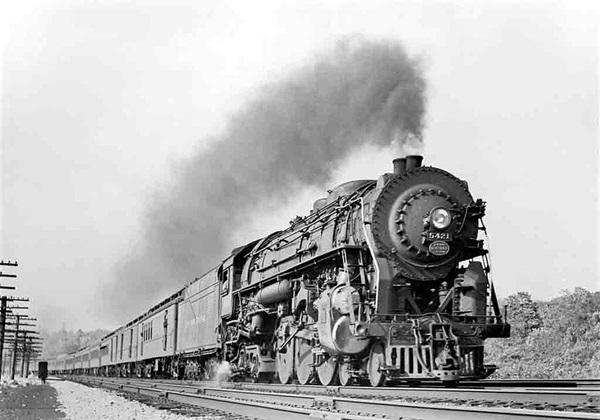
John P. Ahrens
To read Part 2 of George Drury's New York Central history, click hither
History of the New York Central System
The New York Central was a big railroad, and it had several subsidiaries whose identity remained stiff, not so much in cars and locomotives conveying the old proper name but in local loyalties: If yous lived in Detroit, yous rode to Chicago on the Michigan Central, not the New York Central; through the Conrail era and even now, the line across Massachusetts is still known as "the Boston & Albany."
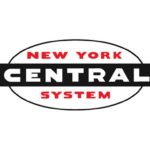 The organization's history is easier to assimilate in minor pieces: first New York Central followed past its two major leased lines, Boston & Albany and Toledo & Ohio Central; so Michigan Key and Large Four (Cleveland, Cincinnati, Chicago & St. Louis). By the mid-1960s NYC owned 99.8 pct of the stock of Michigan Primal and more than 97 pct of the stock of the Big Four. NYC leased both on February. 1, 1930, but they remained dissever companies to avert the complexities of merger.
The organization's history is easier to assimilate in minor pieces: first New York Central followed past its two major leased lines, Boston & Albany and Toledo & Ohio Central; so Michigan Key and Large Four (Cleveland, Cincinnati, Chicago & St. Louis). By the mid-1960s NYC owned 99.8 pct of the stock of Michigan Primal and more than 97 pct of the stock of the Big Four. NYC leased both on February. 1, 1930, but they remained dissever companies to avert the complexities of merger.
In wide geographic terms, the NYC proper was everything east of Buffalo plus a line from Buffalo through Cleveland and Toledo to Chicago (the erstwhile Lake Shore & Michigan Southern). NYC included the Ohio Primal Lines (Toledo through Columbus to and beyond Charleston, West.Va.) and the Boston & Albany (neatly defined by its name). The Michigan Central was a Buffalo–Detroit–Chicago line and everything in Michigan north of that. The Big Four was everything south of NYC's Cleveland–Toledo–Chicago line other than the Ohio Cardinal.
The New York Central System included several controlled railroads that did non accompany NYC into the Penn Key merger. The most of import of these were (with the proportion of NYC ownership in the mid-1960s):
• Pittsburgh & Lake Erie (80 percent)
• Indiana Harbor Chugalug (NYC, 30 percentage; Michigan Central, xxx percent; Chicago & North Western, 20 percent; and Milwaukee Route, 20 percent)
• Toronto, Hamilton & Buffalo (NYC, 37 percent; MC, 22 percent; Canada Southern, 14 percent; and Canadian Pacific, 27 percent).
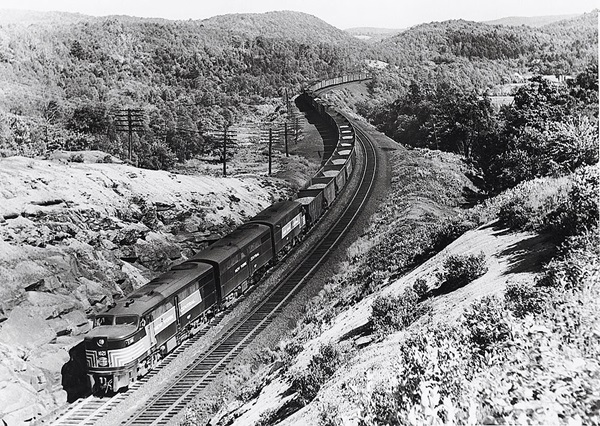
R. E. Tobey
New York Central
The Erie Canal, opened in 1825 between Albany and Buffalo, followed the Hudson and Mohawk rivers between Albany and Schenectady. The 40-mile Albany–Schenectady water route included several locks and was slow; in consequence, stagecoaches plied the 17-mile direct route between the cities. In 1826 the Mohawk & Hudson Rail Route was incorporated to replace the stages between Albany and Schenectady.
The Mohawk & Hudson opened in 1831; its start locomotive was named DeWitt Clinton afterward the governor of the country when the M&H was incorporated. Within months there was a proposal for a railroad all the way from Albany to Buffalo.
One by one, railroads were incorporated, congenital, and opened w from the stop of the Mohawk & Hudson: Utica & Schenectady, Syracuse & Utica, Auburn & Syracuse, Auburn & Rochester, Tonawanda (Rochester to Attica via Batavia), and Attica & Buffalo. By 1841 it was possible to travel between Albany and Buffalo by train in simply 25 hours, lightning speed compared with the culvert packets. 10 years later the trip took a trivial over 12 hours. In 1851 the country passed an deed freeing the railroads from the need to pay tolls to the Erie Culvert, with which they competed. That same year the Hudson River Railroad opened from New York to East Albany.
From the showtime the railroads between Albany and Buffalo had cooperated in running through service. In 1853 they were consolidated as the kickoff New York Central Railroad — the roads mentioned in a higher place or their successors plus the Schenectady & Troy; the Buffalo & Lockport; the Rochester, Lockport & Niagara Falls; and ii unbuilt roads, the Mohawk Valley and the Syracuse & Utica Direct.
The New York & Harlem Railroad was incorporated in 1831 to build a line in Manhattan from 23rd Street northward to 129th Street between Tertiary and Eighth avenues (the railroad chose to follow Fourth Avenue). At offset the railroad was primarily a horsecar organisation, simply in 1840 the road'south charter was amended to allow it to build north toward Albany. In 1844 the rails reached White Plains and in Jan 1852 the New York & Harlem made connection with the Western Railroad (subsequently Boston & Albany) at Chatham, N.Y., creating a New York–Albany rails road.
The towns along the Hudson River felt no need of a railroad, except during the winter when ice prevented navigation. Poughkeepsie interests organized the Hudson River Railroad in 1847. The railroad opened from a terminal on Manhattan'due south due west side all the way to East Albany. Past and so the route had leased the Troy & Greenbush, gaining access to a bridge over the Hudson at Troy. (A bridge at Albany was completed in 1866.)
By 1863 Cornelius Vanderbilt controlled the New York & Harlem and had a substantial interest in the Hudson River Railroad. In 1867 he obtained control of the New York Central, consolidating it with the Hudson River in 1869 to course the New York Cardinal & Hudson River Railroad.
Vanderbilt wanted to build a magnificent last for the NYC&HR in New York. He chose as its site the corner of 42nd Street and Fourth Avenue on the New York & Harlem, the southerly limit of steam locomotive functioning in Manhattan. Construction of Grand Central Depot began in 1869. The new depot was actually 3 separate stations serving the NYC&60 minutes, the New York & Harlem, and the New Oasis. Trains of the Hudson River line reached the New York & Harlem by means of a connecting track completed in 1871 along Spuyten Duyvil Creek and the Harlem River (they accept since become a single waterway). That was the first of three M Centrals.
The present station, Chiliad Central Final, was opened in 1913. Even today Grand Cardinal remains awesome. GCT has a total of 48 platform tracks on two subterranean levels; the project included depressing and decking over the tracks forth Park Artery and electrifying NYC'southward lines n to Harmon and White Plains. (NYC had two other electrified segments: the Detroit River Tunnel, opened in 1910, and Cleveland Matrimony Final, opened in 1930. Diesels put an end to both those electrifications in 1953.)
The Watertown & Rome Railroad was chartered in 1832 to connect Watertown, Northward.Y., with the Syracuse & Utica (and then only a proposal itself). The road opened in 1851, and in 1852 information technology was extended to Greatcoat Vincent, where it connected with a ferry to Kingston, Ontario. In 1861 the West&R consolidated with the Potsdam & Watertown to form the Rome, Watertown & Ogdensburg. The RW&O built a line to Oswego and bought lines to Syracuse and Buffalo. The line to Buffalo was a mistake — information technology bypassed Rochester, had almost no local concern, and was non part of any through route.
The RW&O came under Lackawanna command briefly before a rehabilitation in the 1880s. New direction extended the RW&O northward to connect with a Grand Trunk line to Montreal and added the Black River & Utica (Utica to Watertown and Ogdensburg) to the system. NYC leased the RW&O in 1893.
Meanwhile, NYC had built its own line northward from Herkimer: the St. Lawrence & Adirondack (later Mohawk & Malone). NYC merged the Mohawk & Malone in 1911 and the RW&O in 1913.
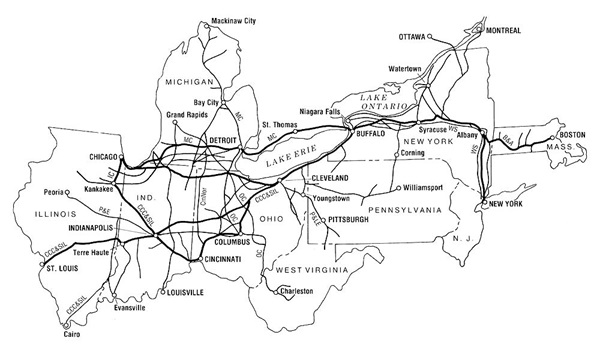
Lake Shore & Michigan Southern
The Michigan Southern was chartered past the land of Michigan in 1837 to build across the southern tier of Michigan to Lake Michigan. Under country auspices it got every bit far west every bit Hillsdale, Mich. It was sold to private interests which combined it with the Erie & Kalamazoo (opened in 1837 from Toledo to Adrian, Mich.) and extended information technology due west to run into the Northern Indiana Railroad, which was edifice east from La Porte, Ind. The line opened from Monroe to South Curve in 1851; by February 1852 it reached Chicago, where it teamed upwardly with the Rock Island to build concluding facilities. (Its successors shared a Chicago station, La Salle Street, with Rock Isle until 1968). The roads were combined as the Michigan Southern & Northern Indiana in 1855. By and then a straight line between Elkhart, Ind., and Toledo had been congenital.
The railroad situation forth the south shore of Lake Erie was complicated by Ohio's insistence on a track approximate of 4 anxiety x inches, Pennsylvania's reluctance to let a railroad from another state cross its borders, and the want of the metropolis of Erie, Pa., to have the change of guess within its limits in the hope that passengers would spend coin while changing trains in that location.
The NYC controlled the Buffalo & State Line and the Erie & North East railroads by 1853; they were combined equally the Buffalo & Erie in 1867. The Cleveland, Painesville & Ashtabula was opened betwixt Cleveland and Erie in 1852. In 1868 the CP&A took its familiar name, Lake Shore, as its official proper name, and a yr subsequently information technology absorbed the Cleveland & Toledo and joined with the Michigan Southern & Northern Indiana to form the Lake Shore & Michigan Southern. During a business panic virtually that time, Cornelius Vanderbilt acquired control of the LS&MS.
In 1914 the New York Primal & Hudson River, the Lake Shore & Michigan Southern, and several smaller roads were combined to class the New York Key Railroad — the 2d railroad of that proper name.
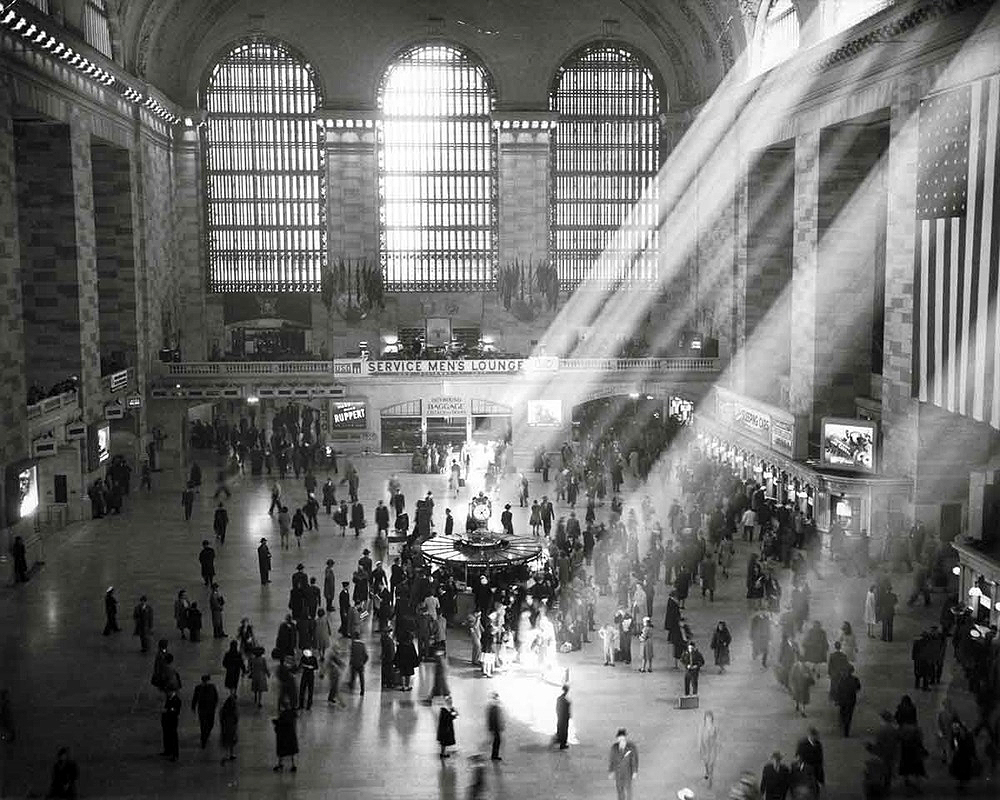
New York Central
Boston & Albany
The Boston & Worcester Railroad opened between the cities of its name in 1835. Its charter had a clause prohibiting the structure of a parallel railroad within 5 miles for thirty years. The Western Railroad opened in 1840 from Worcester west to Springfield and in 1841 across the Berkshires to Greenbush, N.Y., on the east banking company of the Hudson opposite Albany. The two railroads shared some directors, merely efforts at merging them were futile until 1863, when B&W'due south protection clause expired and the Western proposed building its own line from Worcester to Boston. The two roads were consolidated every bit the Boston & Albany Railroad in 1867.
The B&A had several small-scale branches and a few major ones: Palmer to Winchendon, Mass., Springfield to Athol, Mass., Pittsfield to Due north Adams, Mass.; and Chatham to Hudson, N.Y.
The B&A'due south primary connection was the New York Central at Albany, and in 1900 the NYC leased the B&A. The Central wanted a road to Boston. It had a pick of the B&A or the parallel Fitchburg Railroad (later on Boston & Maine). If NYC chose the Fitchburg, the B&A would be left with simply local business, then B&A willingly forsook independence. In 1961 NYC merged the Boston & Albany.
B&A maintained more than of its identity than other NYC subsidiaries. Information technology had its ain officers, and until 1951 its locomotives and cars were lettered "Boston & Albany" rather than "New York Central Lines." B&A'south steam power was basically of NYC appearance but with a few distinctive features, such as square sand domes on the Hudsons and showtime smokebox doors on Pacifics. The profile of the B&A, definitely not the water level route NYC was so proud of elsewhere, called for heavy power in the form of 2-half dozen-6-2s and 2-viii-4s (the latter named for the Berkshires over which the line ran). Nearer Boston, B&A ran an extensive suburban service.
Source: https://www.trains.com/ctr/railroads/fallen-flags/remembering-the-new-york-central-system-part-1/
0 Response to "A Review of Railroad Operations in 1963 J Elmer Monroe"
Post a Comment